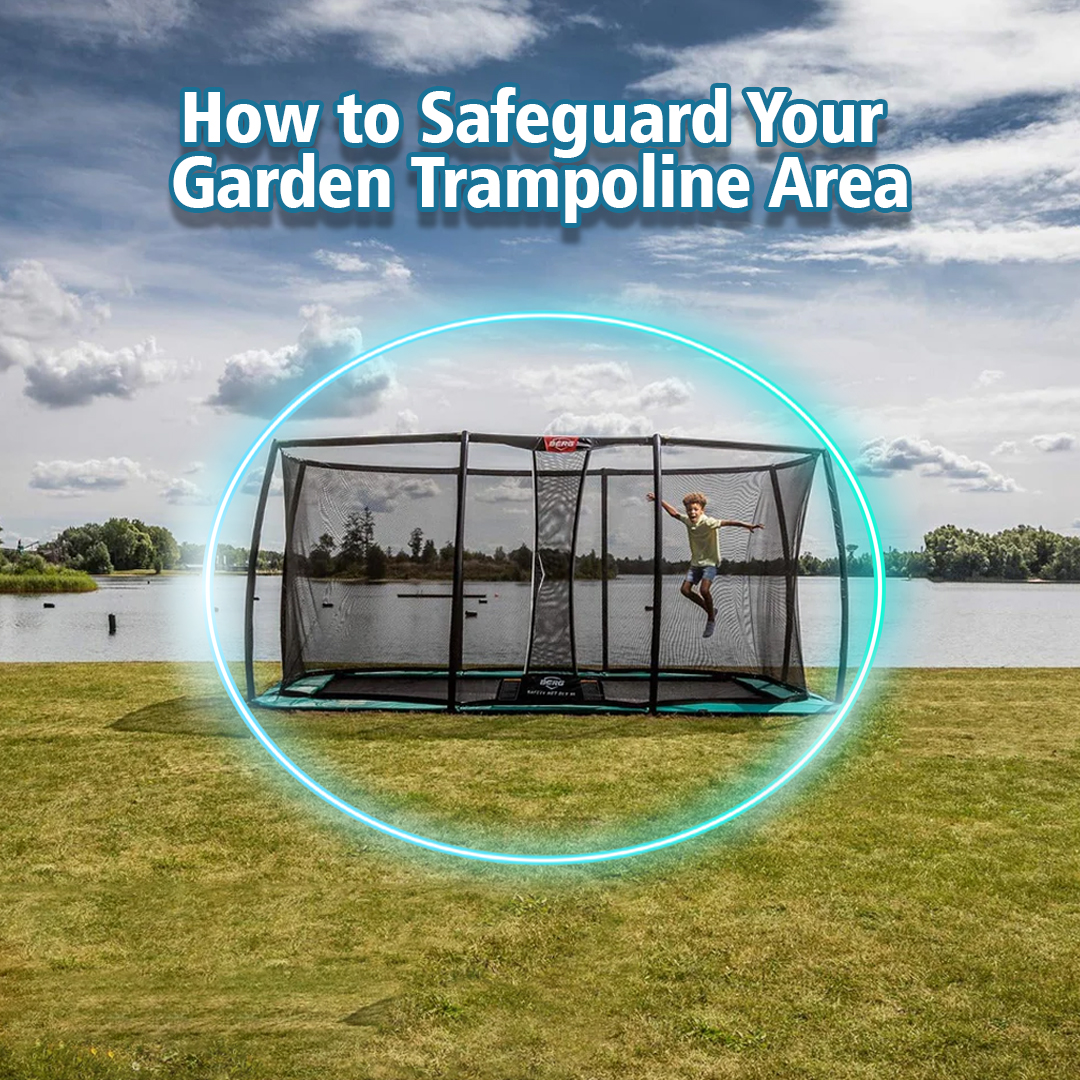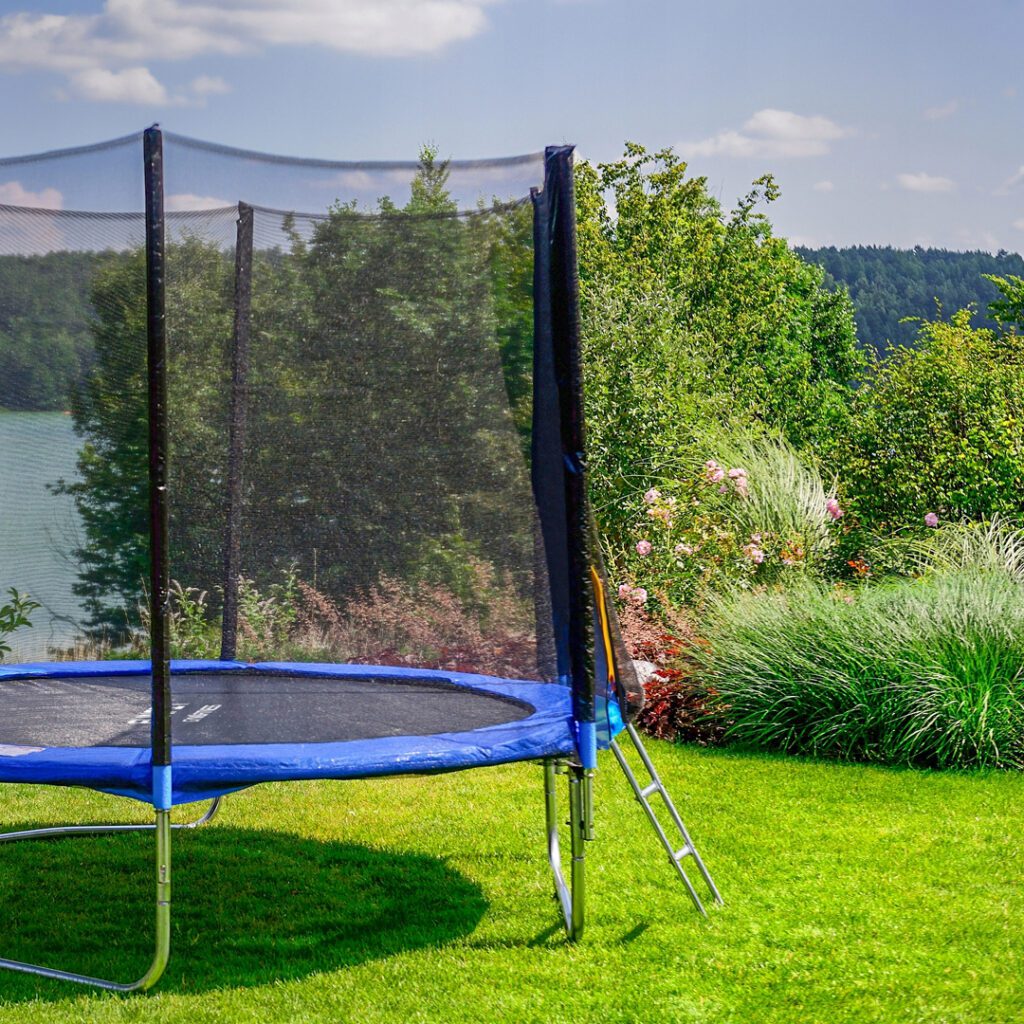
Owning a trampoline can provide hours of fun and exercise for both children and adults. However, it’s important to keep safety in mind to avoid injury. Proper precautions, like installing safety netting and padding, can help ensure your trampoline is enjoyable for the whole family.
Establishing rules for proper trampoline use and always supervising jumpers can help minimise the risk of injury. Staying safe will ensure fun and memorable experiences for the whole family. Isn’t your family’s safety worth a little extra effort? By taking the proper safety precautions, you can enjoy your garden trampoline for years to come.
In this article, we’ll explore top tips for creating a protected garden trampoline area, from choosing the right surface underneath to padding and netting recommendations.
Selecting the Right Location
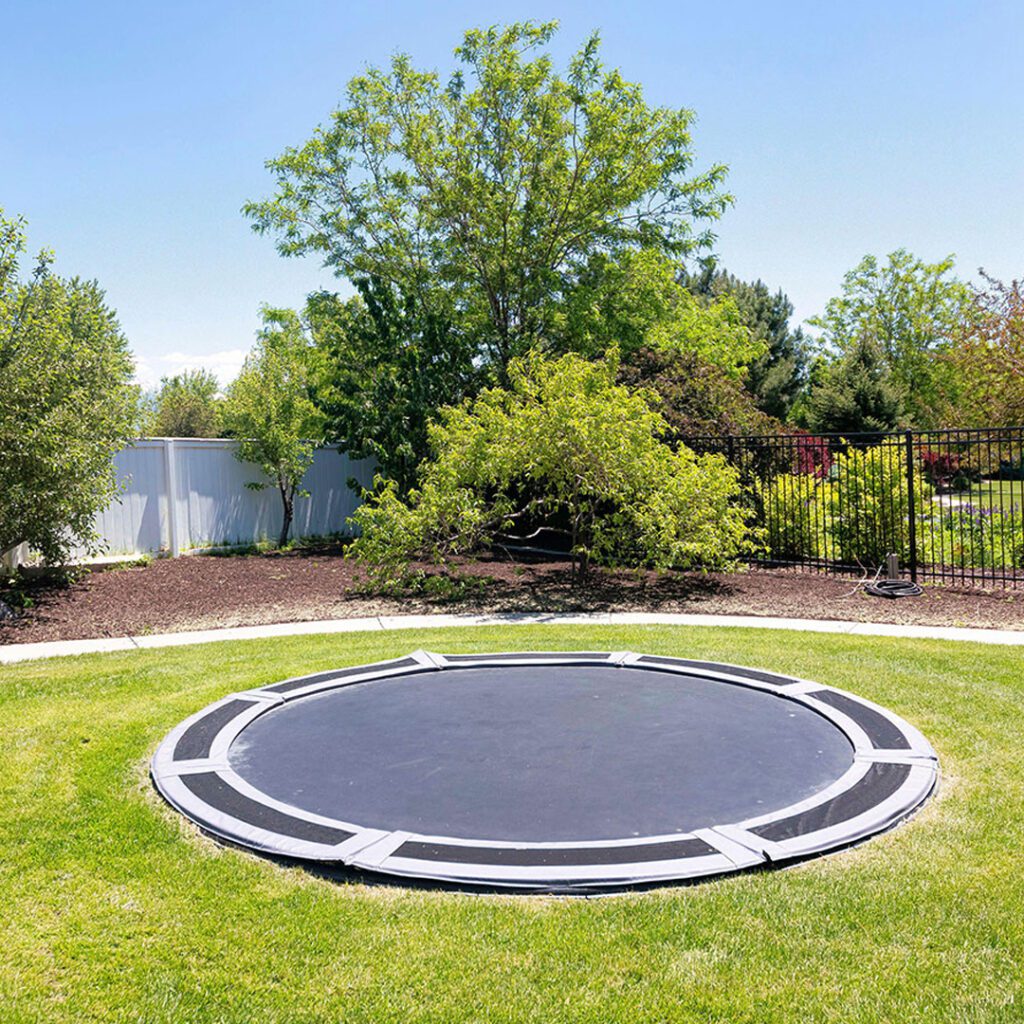
To keep your children safe while bouncing, you’ll need to find the perfect spot in your garden for the trampoline. Look for a level area that’s a good size and clear of any obstructions.
Flat and Even Ground
An uneven surface can cause injuries from tripping or landing awkwardly after jumps. Check that the ground is flat by using a spirit level. You may need to do some work to level the area. If the ground slopes, you can dig into the higher end to even it out.
Plenty of Space
Trampolines require a lot of room, especially if you have a large model like a 14ft trampoline or your children like to do ambitious jumps and spins. You’ll want at least 8-10 feet of clear space around the garden trampoline, preferably more. This gives jumpers enough area to land and reduces the risks of collisions with other children or objects.
Away from Obstacles
Place the trampoline away from fences, trees, laundry lines and any other obstructions. children can easily lose control of their bouncing and collide with objects around the trampoline. Keep a safe distance of at least 5-10 feet between the garden trampoline and any obstacles.
Overhead Clearance
Look up to ensure there are no overhanging branches or power lines above where you want to put the trampoline. Children and adults alike can get some serious height on a trampoline, so a minimum of 20-30 feet of overhead clearance is recommended for safety.
By choosing a spot in your garden that’s flat, spacious, free of obstructions and has plenty of overhead room, you’ll have happy, injury-free bouncing for years to come.
Installing Safety Equipment
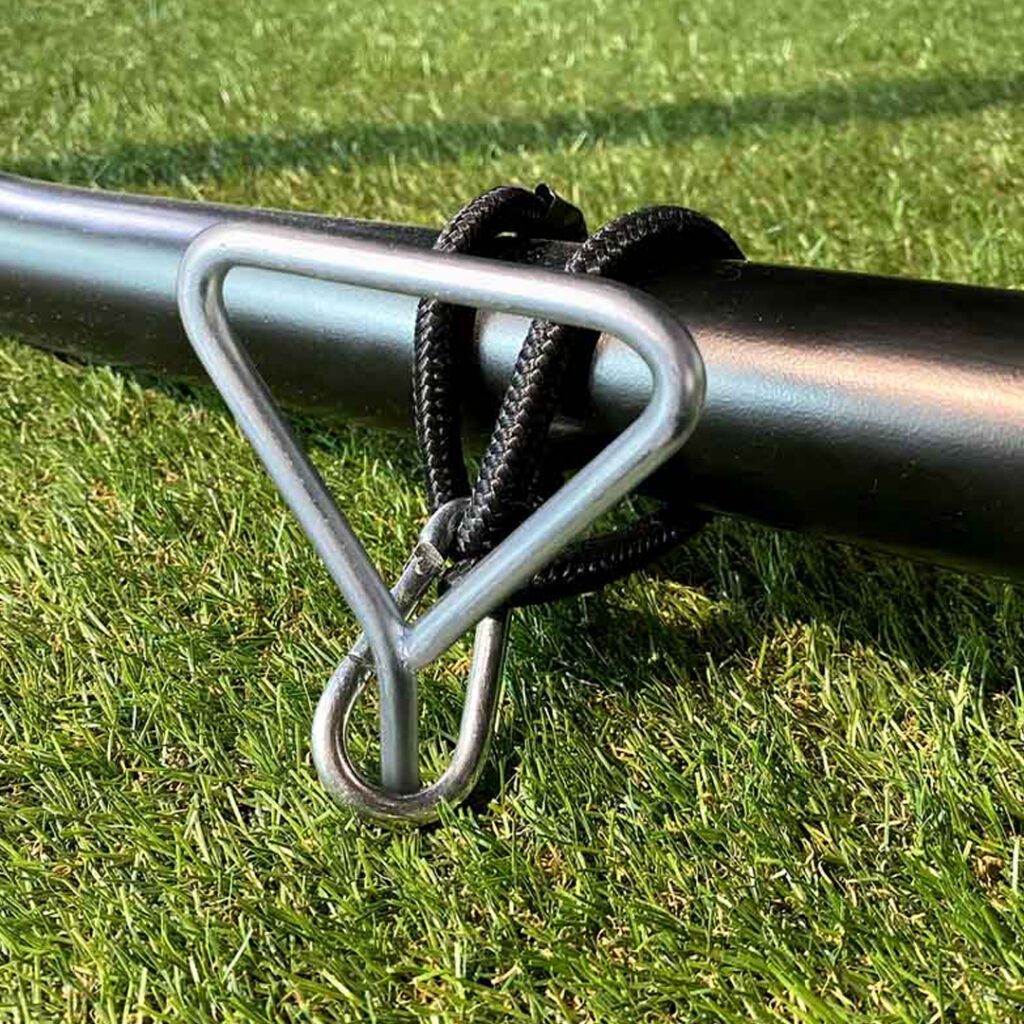
To safeguard your trampoline and prevent injuries, investing in high-quality safety equipment is a must.
Enclosure netting
Enclosure netting surrounds the garden trampoline and prevents falls from the sides. Look for netting that is tightly woven, UV-resistant and at least 6 feet high. For maximum safety, choose netting with a dual-closure entry that zips and latches shut.
Trampoline Pads
Trampoline padding for the springs and frame protects jumpers from hard edges and pinch points. High-density foam padding that securely attaches to the trampoline is best. Check that the padding covers all springs and the upper frame. For the highest level of protection, look for padding rated for commercial trampoline parks.
Anchor Kits
Tie down anchor kits securely fasten the trampoline to the ground, which helps prevent the trampoline from blowing over in high winds. The kits typically include heavy-duty stakes and straps that attach to the garden trampoline legs. If you live in an area with frequent strong winds, anchoring your trampoline is a must for safety and to prevent damage. Anchors can help keep a trampoline steady in winds up to 100 kmph.
Establishing Ground Rules
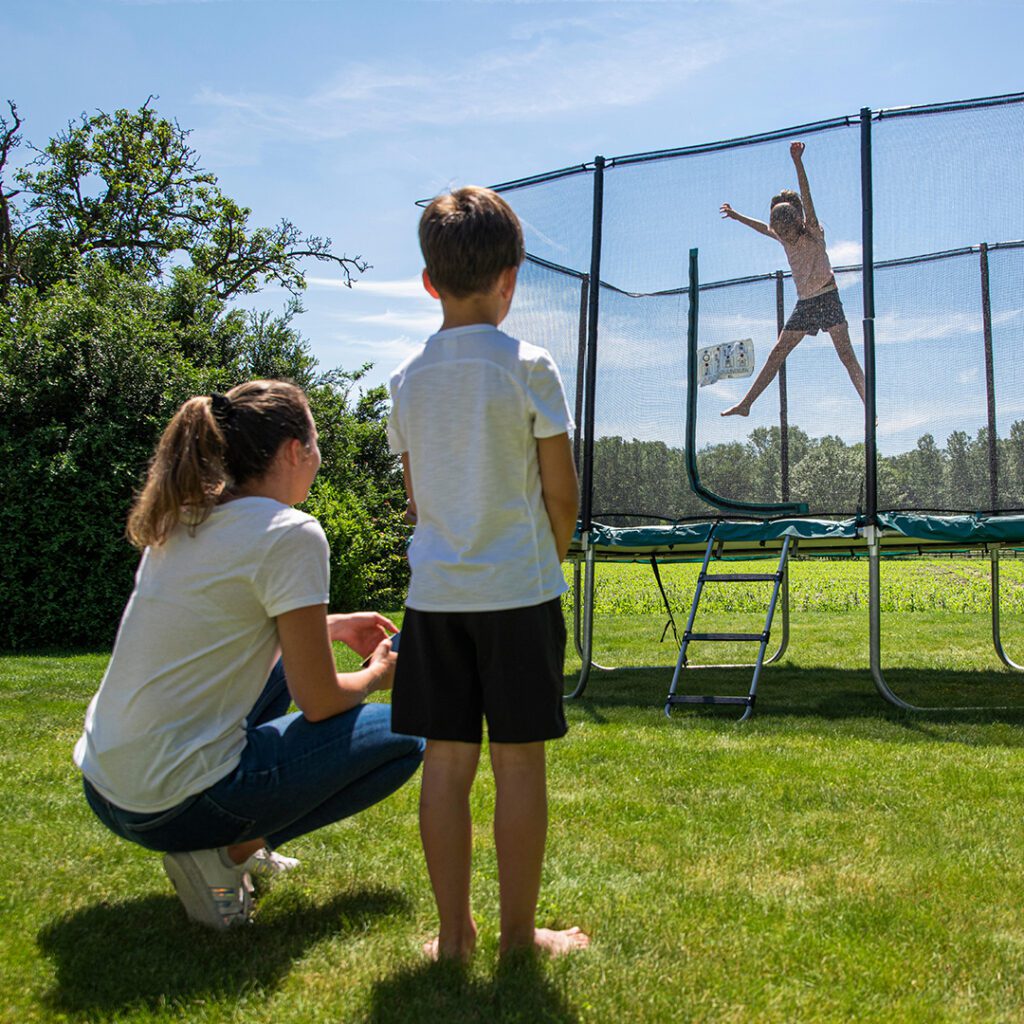
To keep everyone safe while jumping on the garden trampoline, it’s important to establish some ground rules before letting the children loose. The most important rule is that only one person should bounce at a time. Having multiple jumpers can easily lead to collisions, falls, and injuries.
Take Turns
Set a time limit for each jumper’s turn, such as 2-3 minutes. Use a timer to keep turns fair and make sure no one hogs the trampoline. This also gives jumpers a chance to rest in between turns and prevents them getting overtired or losing control of their bouncing.
No Dangerous Tricks
Somersaults, flips or any other advanced aerial manoeuvres should be prohibited, especially for younger or inexperienced jumpers. These types of tricks greatly increase the risk of landing incorrectly and suffering sprains, fractures or head injuries. Stick to basic bouncing, tucking your chin to your chest for safety.
Close Supervision
Children under the age of six should always be supervised by an adult while jumping. Older children and teens should also be monitored to ensure they are following the rules and jumping safely. Never leave children unattended on the garden trampoline. Spotters should be stationed around the edge of the trampoline in case anyone starts to lose control or land incorrectly after a jump.
By enforcing these simple ground rules, you can ensure everyone enjoys your trampoline safely. Regular reminders, especially for excited children, will help make the rules second nature and keep the jumping experience fun for all. Most importantly, lead by example and follow the rules yourself each time you take a bounce!
Regular Inspections and Maintenance
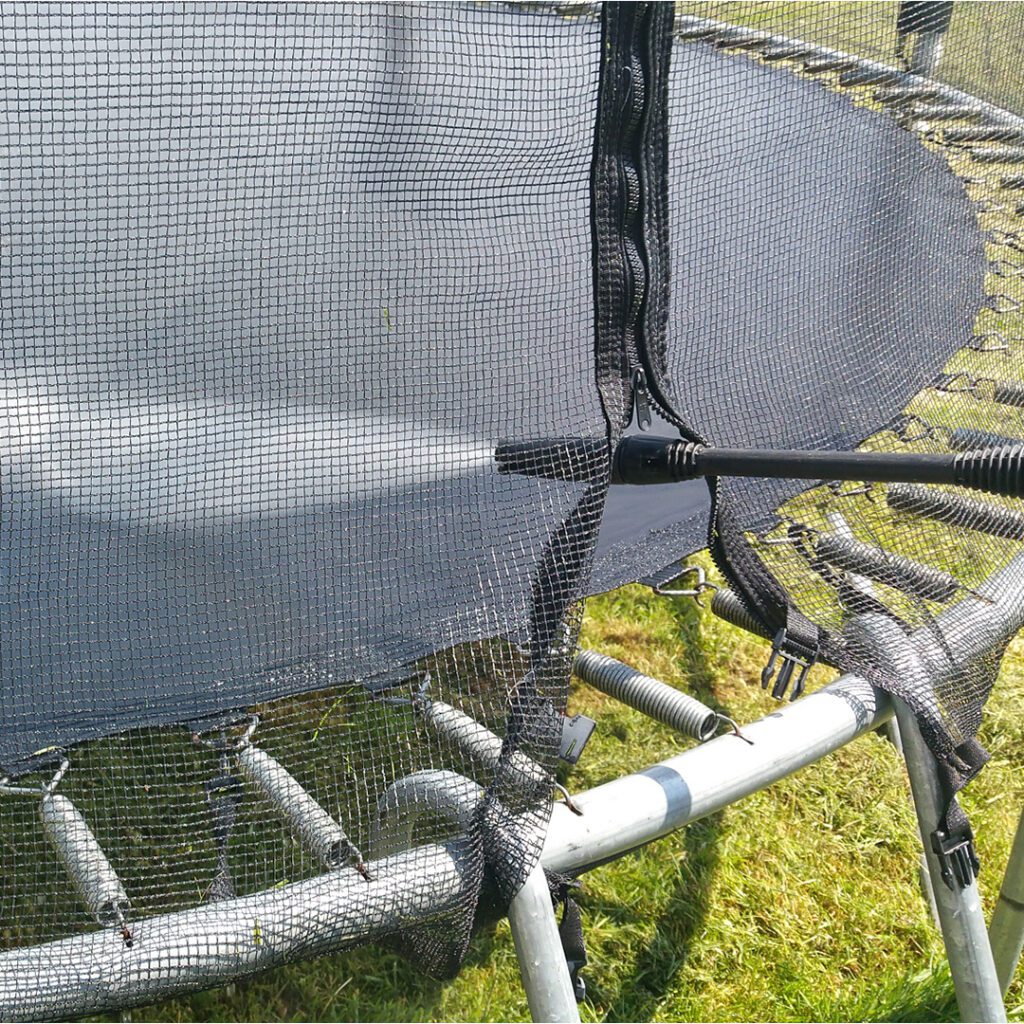
To safeguard and maintain your garden trampoline through the seasons, it’s vital to carry out regular inspections and maintenance. Performing routine checks of the trampoline components and surroundings will help identify any issues early and ensure the area remains secure and hazard-free for jumpers.
Inspect the Trampoline and Padding
Inspect the trampoline bed, springs, and padding before each use. Check that the springs and bed are securely attached with no tears or holes. Make sure the safety padding covers all springs and the edges of the trampoline, with no rips or holes. Replace any damaged parts immediately.
Check the Enclosure
The enclosure netting and poles should be properly installed and in good condition. Ensure the netting is taut, with no holes or loose threads. Poles should be securely fixed in the ground. Replace damaged netting or poles right away.
Examine Anchor Points
If your trampoline uses anchor straps or stakes to secure it to the ground, inspect them regularly. Anchor points should be firmly fixed in the ground, with straps or stakes showing no signs of rust or damage. Re-secure or replace them if needed.
Clear the Surrounding Area
Scan the area around the trampoline and remove any debris, lawn equipment or other potential hazards. A 3-metre clearance zone around the trampoline is recommended. Ensure the area under the trampoline is clear in case anyone falls through.
Performing routine maintenance like these inspections will help reduce risks and ensure your trampoline remains a source of safe fun for years to come. Be proactive and address any issues right away to safeguard jumpers and enable carefree bouncing without worry.
Weather Considerations
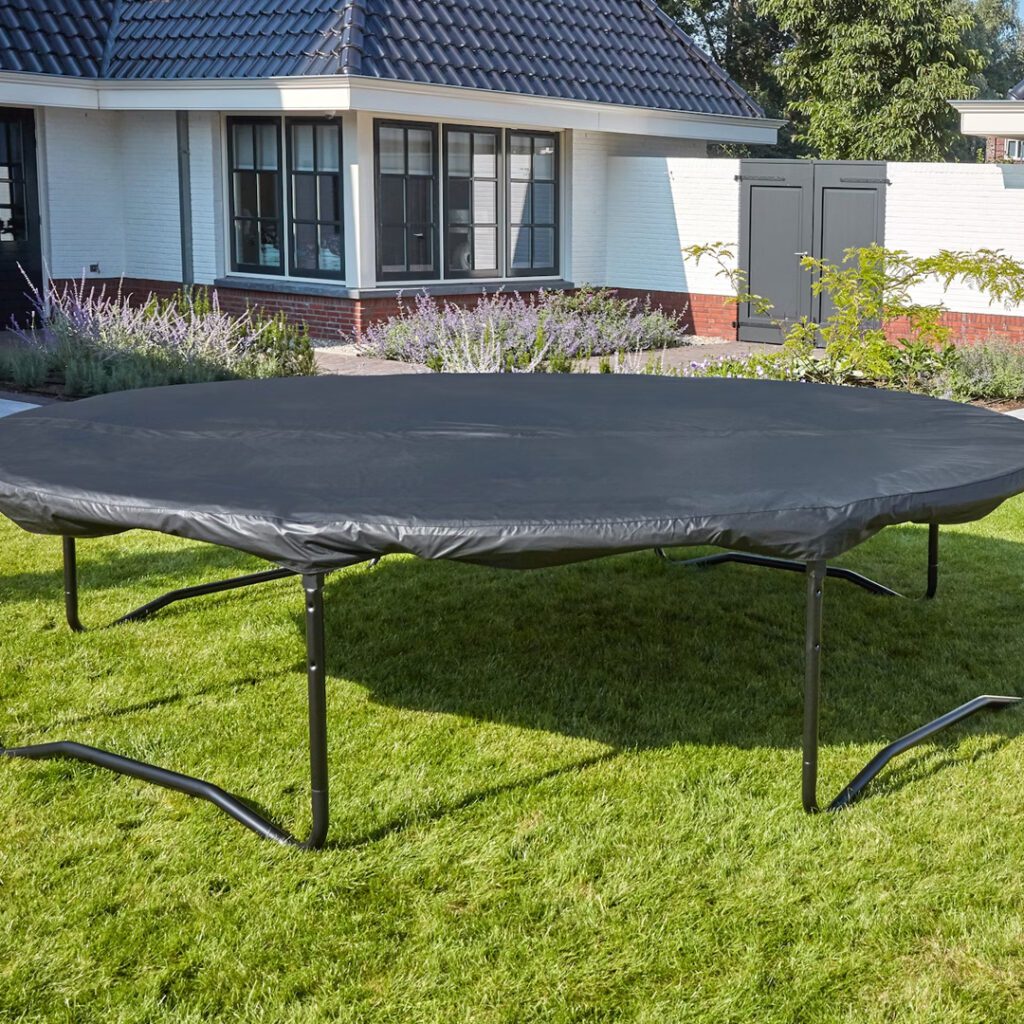
Wind
Strong winds can easily blow jumpers off course or even off the trampoline altogether. As a rule of thumb, avoid jumping if winds exceed 15-20 mph. The higher and lighter the jumper, the more the wind will affect them. Secure any safety netting to prevent it from blowing away or entangling jumpers.
Rain
Jumping on a wet trampoline is extremely dangerous and should be avoided. The water will pool on the mat, making the surface slippery and hard to control your bounce. The springs and frame can also become rusty over time if frequently exposed to rain. If it starts raining while jumping, immediately stop and take cover. Ensure the mat is fully dry before bouncing again to prevent falls.
Thunderstorms
In addition to the risks associated with rain, thunderstorms also bring the threat of lightning. Metal components like the springs and frame can conduct electricity, electrocuting anyone on the trampoline. As soon as you see lightning or hear thunder, get off the trampoline and go inside.
Cold weather
Trampolining in very cold weather, especially if there is snow or ice on the ground, can be dangerous. The mat and springs become brittle in low temperatures, more prone to breakage. The pads and nets may also not attach as securely. Limit outdoor trampolining to warmer months when possible, or consider an indoor trampoline for year-round use. Always exercise caution on the trampoline in winter and dress warmly, wearing gloves, hat, and thick socks.
By following these guidelines, you can enjoy your trampoline safely during mild weather conditions. However, at the first sign of strong wind, rain, lightning, or very cold temperatures, stop jumping immediately and head inside. It’s always better to be safe than risk injury due to unfavourable weather. Your trampoline will still be there waiting once the weather clears up and conditions improve.
Conclusion
By taking some simple precautions, adding safety netting, and laying down shock-absorbing surfaces underneath, you can let the children bounce away to their heart’s content knowing they’re protected. Just be sure to keep up with maintenance checks and repairs. With a well-cared for trampoline and supervision when it’s in use, the whole family can enjoy hours of healthy outdoor fun. Keep these pointers in mind and your trampoline can provide a safe space for exercise and playtime in the garden for years to come.

